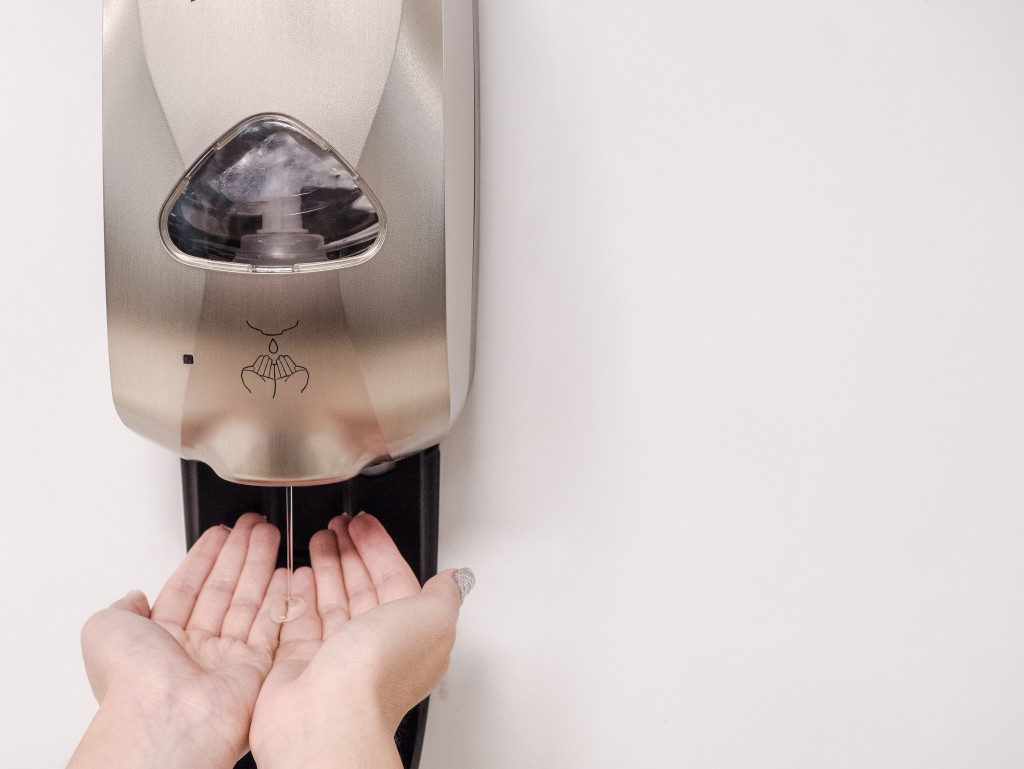There are innumerable ways in which the pandemic has impacted and influenced our lives. Some of those changes may be irreversible.
When it comes to health and safety measures, it may actually be a good thing that everyone has a heightened awareness of the need to wash hands and disinfect surfaces. But do we really need to warp our behavior around these precautions? The answer may depend on future developments in contactless technology.
Biometric applications
Security for both residential and commercial locations has come a long way from physical locks and keys. The basic principle remains the same: you want to keep certain areas off-limits to unauthorized people.
The problem is that people who do need to be there tend to keep passing through. In a workplace or commercial area, that creates countless opportunities for surface contact and the spread of disease.
Installation of a more sophisticated door access control system helps regulate the flow of traffic and keep track of who has gone. Swiping an ID with a barcode or magnetic strip involves minimal contact. Using biometrics like iris patterns or facial recognition eliminates contact.
Companies can also use facial recognition technology inside the workplace to monitor employee activity concerning the observance of social distancing. It can be integrated with existing CCTV systems on the premises to alert workers when they are potentially encroaching on another person’s space.
New testing methods
The reduction of physical contact is an essential safety measure in general because, with COVID-19, even asymptomatic people could be carriers. Yet when someone displays symptoms, this precaution takes on critical importance. Even if they don’t turn out to be infected with the coronavirus, they could have the flu or another easily transmitted disease.
Thus, one of the most vital areas where we can reduce contact is in the actual testing of persons under interest. Currently, many COVID-19 testing methods involve taking a nasal or throat swab or a sample of saliva. They may also collect blood through a pinprick.
These samples may be collected by the person being tested, but that task is more often done by a professional provider for precision and effectiveness. Their involvement puts them at further risk.
Contactless technology can step up in this area. A recent testing method developed by graduates of the National University of Singapore uses breath analysis. This makes it easy for people to provide samples by simply breathing into a disposable mouthpiece. Other interventions can include the use of self-administered robots to perform the swabbing on users.
Robot interventions
Overall, robots seem to offer a variety of promising solutions in the realm of contactless services. We’re already getting accustomed to the new normal of remote work and online shopping for most needs. Robots can intervene  in multiple parts of that process.
in multiple parts of that process.
Companies are experiencing delays in the logistics process as workers have to disinfect surfaces constantly. They need to oversee and handle deliveries. Recipients would prefer to have their packages as sterile as possible.
Self-driving vehicles are already being used to help deliver medical supplies to hospitals and emergency shelters. Some groceries and e-commerce companies have also partnered with system operators such as Nuro and Pony.ai to fulfill their goods.
By letting robots take over those tasks, more workers can be freed from physical involvement and shifted into knowledge-based positions, such as the remote operation of said vehicles. The technology already exists for you to have pizzas delivered by drone. It’s more about getting the regulations in place to let that happen.
Contactless suites
More than any single solution, though, contactless technology offers the potential for businesses to use an entire integrated system to suit their needs. This is being developed and implemented in industries that have been most heavily impacted by the pandemic.
Hotels, for example, are suffering from several factors related to COVID-19. A significant drop in travel rates has brought fewer lodgers seeking accommodation. People don’t want to hang around in lobbies or wait in line with other people.
A complete contactless suite can solve all those needs. It’s not just about offering contactless payment. Guests will be able to skip the front desk altogether when checking in or out. The system also covers room service and food delivery. It even helps hotel staff to get trained without any in-person onboarding.
Our lives will gradually return to something approaching but not the same as the ‘old normal.’ Everyone looks forward to the day the pandemic finally recedes into history, but we’ll never forget the importance of disinfection and other safety measures. Contactless technology will help ensure that doing so won’t involve a massive overhaul of our habits.
